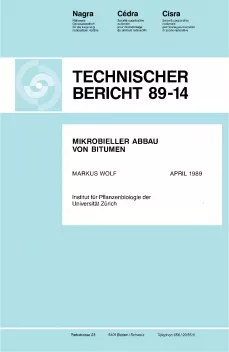
Technischer Bericht NTB 89-14
Mikrobieller Abbau von Bitumen
Bitumen is used as a matrix to immobilize low and intermediate level radioactive wastes. Since the presence of microorganisms in nuclear waste repositories cannot be ruled out, it is important to quantify the microbial degradation of bitumen. Investigations were carried out both under aerobic and anaerobic conditions using a variety of cultures. It was observed that bitumen degrading microorganisms are ubiquitous and form biofilms on bitumen surfaces. The long term bitumen degradation rates were found to be essentially independent of the culture initially inoculated. Under aerobic conditions this rate lies between 20 and 50 g of bitumen per m2 and year, leading to the production of 15 to 40 litres m-2 a-1 of CO2 at STP. Under anaerobic conditions the degradation rate is only about 1 percent of that under aerobic conditions. A linear extrapolation for anaerobic conditions and for a surface to volume ratio typical for nuclear waste (200 litre drums) lead to 0.3 to 0.8 percent loss of bitumen matrix within 1000 years.
